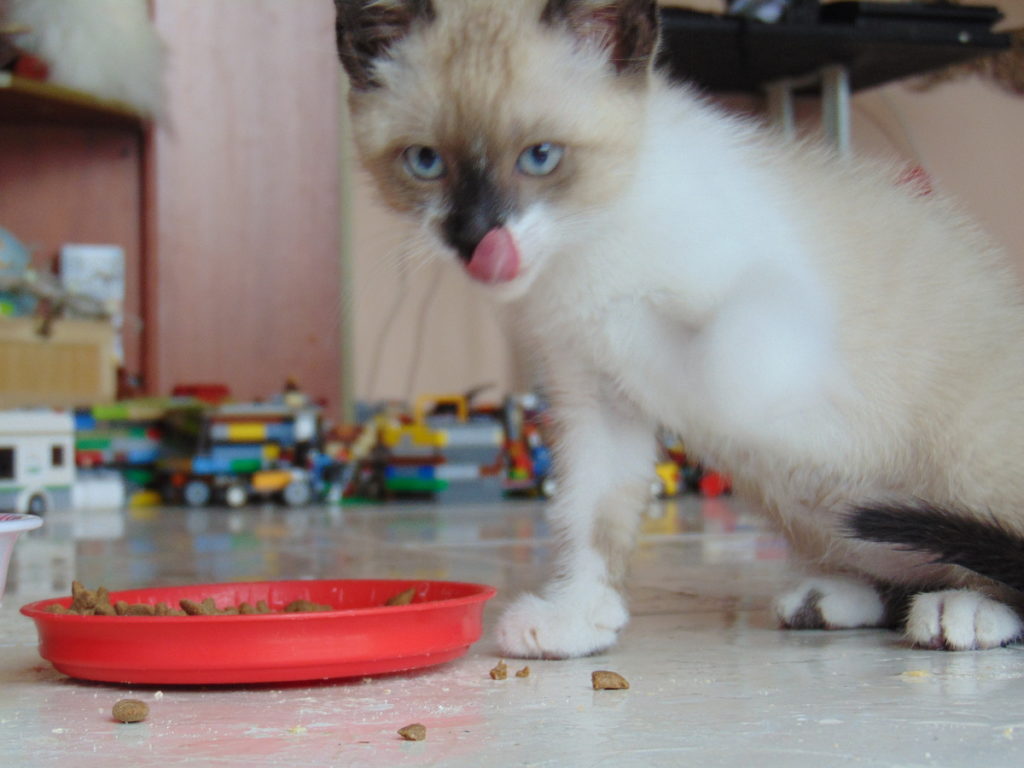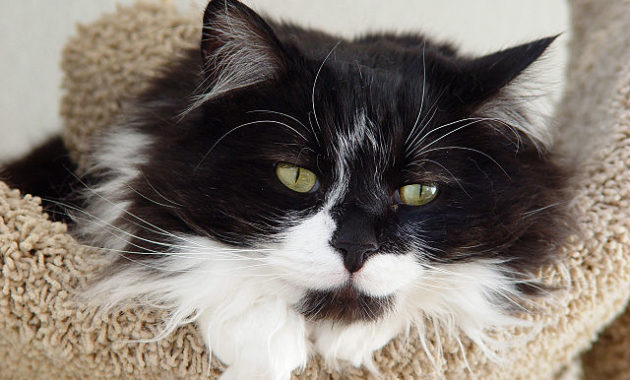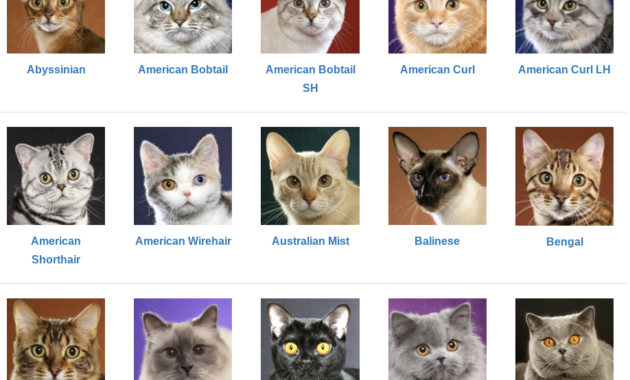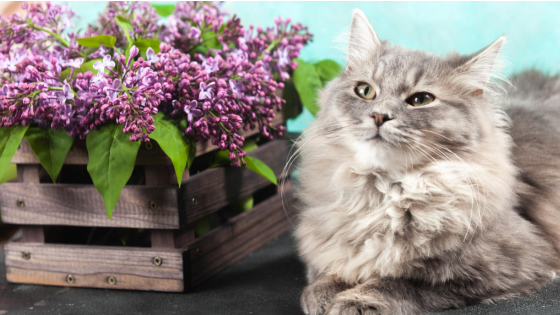The decision of whether to allow your feline companion to roam outdoors or keep them indoors is a complex one that encompasses various considerations. Factors such as safety, health, and behavioral well-being play crucial roles in determining the most suitable environment for your cat.
Understanding the implications of each choice is essential in ensuring the happiness and longevity of your beloved pet. By exploring the nuances of this decision, pet owners can make informed choices that align with the well-being of their furry friends.
The debate between indoor and outdoor living for cats is an ongoing discussion with no one-size-fits-all answer, making it a topic worth further exploration.
Key Takeaways
- Outdoor cats enjoy more stimulation and exhibit fewer behavior problems.
- Indoor cats have a longer lifespan and reduced health risks.
- Enriched indoor environments can provide necessary stimulation for cats.
- Regular playtime and interactive toys are essential for indoor cats' well-being.
Behavior and Stimulation Benefits
Indoor cats can thrive in enriched indoor environments that provide necessary stimulation through toys, scratching posts, and interactive play opportunities. These elements cater to their natural instincts and help prevent behavioral issues like excessive scratching or aggression.
Interactive play sessions not only keep indoor cats physically active but also stimulate their minds, preventing boredom and ensuring overall well-being. Window seats or perches offer mental stimulation by allowing cats to observe their surroundings, satisfying their curiosity.
Regular playtime sessions are essential for indoor cats, providing them with the necessary exercise and mental enrichment they need to lead a fulfilling life indoors. By creating a stimulating environment, indoor cats can enjoy a happy and healthy lifestyle within the safety of their home.
Health Risks for Outdoor Cats
When considering the outdoor environment for cats, it is essential to acknowledge the numerous health risks that outdoor cats are exposed to.
- Outdoor cats face different health risks like heatstroke, hypothermia, and infections.
- Wounds from fights with other animals are common for outdoor cats.
- Outdoor cats are at risk of contagious diseases like rabies and feline leukemia.
- Parasites such as fleas, ticks, ringworm, and roundworms are common in outdoor cats.
- Indoor cats have a longer lifespan compared to outdoor cats.
These risks highlight the importance of understanding the potential dangers that outdoor cats may encounter and the need for appropriate precautions to ensure their health and safety.
Safety Measures for Cat Owners
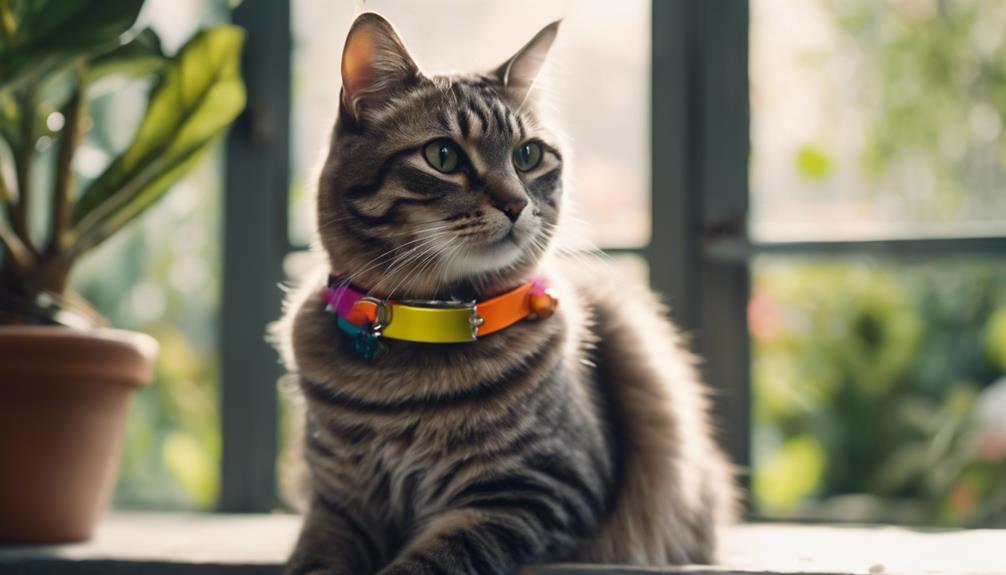
Considering the potential risks outdoor cats face, cat owners must diligently implement safety measures to safeguard their feline companions' well-being and longevity. To ensure the safety of your outdoor cat, here are some crucial steps you should take:
| Safety Measure | Description | Importance |
|---|---|---|
| Microchip Identification | Helps locate your cat if they wander off | Essential |
| Year-Round Flea & Tick Prevention | Protects against parasites all year round | Vital |
| Evening Confinement | Bring your cat inside before dark to reduce dangers | Critical |
| Up-to-Date Vaccinations | Prevents contagious diseases and ensures good health | Mandatory |
| Consider Pet Insurance | Financial protection for increased veterinary visits | Recommended |
Longevity: Indoor Vs. Outdoor Cats
In assessing the longevity of cats, the living environment they inhabit significantly influences their lifespan. When comparing indoor and outdoor cats, several factors come into play:
- Indoor cats typically live 10 to 15 years on average, while outdoor cats live 2 to 5 years according to UC Davis School of Veterinary Medicine.
- Outdoor cats are more exposed to health risks like infections, wounds from fights, and contagious diseases.
- Indoor cats have a safer environment with reduced risks of accidents and illnesses.
- Providing proper care, nutrition, and regular veterinary check-ups can contribute to a longer life for indoor cats.
- Environmental enrichment, mental stimulation, and a stress-free atmosphere can positively impact the longevity of indoor cats.
Behavioral Concerns: Indoor Vs. Outdoor
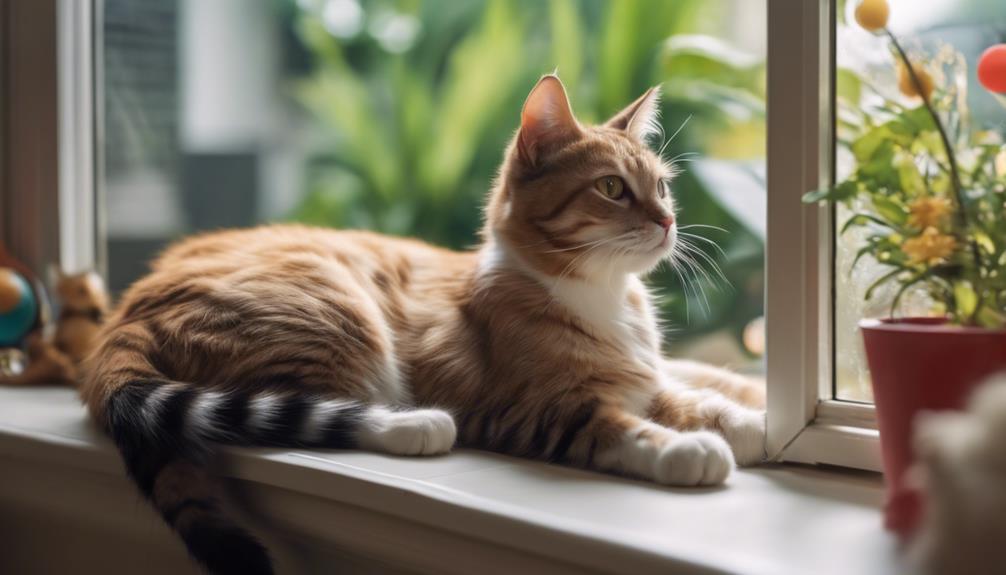
Behavioral disparities between indoor and outdoor cats reveal significant differences in their interaction with their surroundings and overall demeanor. Outdoor cats tend to exhibit more natural behaviors such as hunting, climbing, and exploring, leading to a higher level of physical activity. On the other hand, indoor cats may display behaviors like increased vocalization, scratching furniture, or even aggression due to pent-up energy. Providing enrichment activities for indoor cats is crucial to prevent behavioral issues. Below is a comparison table highlighting some behavioral concerns of indoor and outdoor cats:
| Behavioral Concerns | Indoor Cats | Outdoor Cats |
|---|---|---|
| Exploration | Limited to indoor environment | Have access to a variety of outdoor stimuli |
| Physical Activity | Less opportunity for exercise | Engage in natural activities like hunting and climbing |
| Behavioral Issues | Can develop issues like furniture scratching or boredom | Less likely to exhibit behavioral problems |
| Socialization | May have limited interactions with other animals | Encounter various animals and people outdoors |
Environmental Stimulation for Indoor Cats
Enhancing indoor environments to provide adequate stimulation for cats is essential for their overall well-being and mental health.
- Interactive toys, such as feather wands or laser pointers, engage cats mentally and physically.
- Puzzle feeders or treat balls can stimulate your cat's hunting instinct and provide mental enrichment.
- Cat trees or shelves offer vertical space for climbing and perching, mimicking their natural environment.
- Rotating toys or introducing new items regularly prevents boredom and keeps your cat engaged.
- Creating hiding spots or cardboard boxes for exploration and playtime can satisfy your cat's need for security and entertainment.
Health Risks: Parasites and Infections
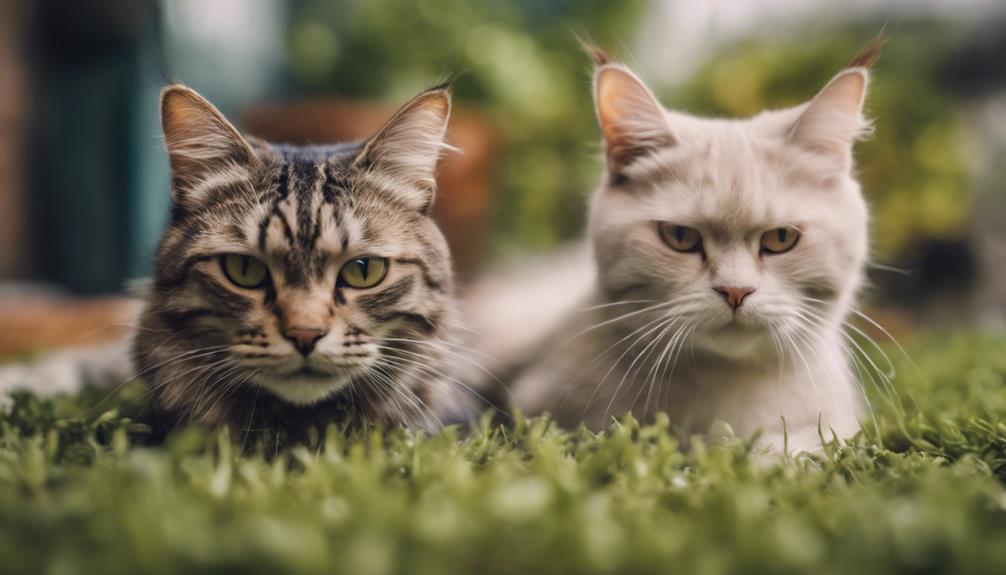
Parasites and infections pose significant health risks to both indoor and outdoor cats, impacting their overall well-being and longevity. Outdoor cats are particularly vulnerable to a variety of parasites and infections due to their exposure to the elements and interactions with other animals. Common parasites found in outdoor cats include fleas, ticks, ringworm, and roundworms, which can lead to serious health complications if left untreated. Additionally, outdoor cats are at a higher risk of contracting contagious diseases such as rabies and feline leukemia. To illustrate the dangers outdoor cats face, here is a comparison table:
| Health Risks | Indoor Cats | Outdoor Cats |
|---|---|---|
| Parasites | Fewer exposure | Higher risk |
| Infections | Limited contact | Contagious diseases possible |
| Veterinary Visits | Regular check-ups | Increased visits due to risks |
This table highlights the stark differences in health risks between indoor and outdoor cats, emphasizing the importance of protecting our feline companions from potential harm.
Lifespan Disparity: Indoor Vs. Outdoor
As we shift our focus to the comparison of lifespan between indoor and outdoor cats, it becomes evident that the living environment plays a crucial role in determining the longevity of our feline companions.
- Indoor cats typically live 10 to 15 years on average.
- Outdoor cats, as reported by UC Davis School of Veterinary Medicine, have a lifespan of 2 to 5 years.
- The controlled environment indoors reduces exposure to dangers like traffic accidents.
- Indoor cats are less prone to diseases transmitted by other animals.
- Regular veterinary care and a safe, secure living space contribute to the extended lifespan of indoor cats.
Microchipping and Identification
Microchipping and proper identification are essential components of ensuring the safety and well-being of cats, particularly those that venture outdoors. Microchipping involves implanting a tiny chip under the cat's skin, containing unique information that can be scanned by a vet or shelter if the cat gets lost. It is crucial to pair this with visible identification, such as a collar with a tag displaying the cat's name and your contact information. Here is a breakdown of the importance of microchipping and identification for outdoor cats:
| Benefits | Details |
|---|---|
| Permanent ID | Helps reunite lost cats with their owners |
| Provides peace of mind | Increases chances of a safe return home |
| Ensures accurate identification | Avoids confusion during emergencies |
| Required by many shelters | Facilitates quicker reunions with your cat |
Flea and Tick Prevention
Ensuring the well-being of outdoor cats extends beyond microchipping and identification to include vigilant flea and tick prevention measures.
- Administering monthly flea and tick prevention treatments.
- Using flea collars or topical solutions recommended by veterinarians.
- Regularly checking for signs of fleas and ticks on your cat's fur.
- Keeping outdoor areas where your cat roams treated for pests.
- Consulting with your vet about the most effective prevention methods for your cat's specific needs.
Vaccination Importance
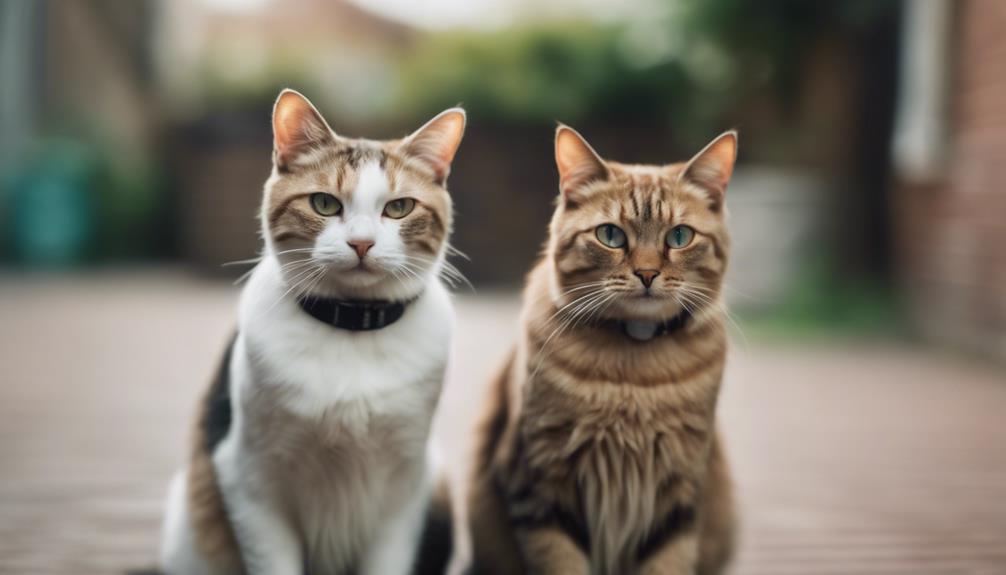
Regular vaccination is crucial for maintaining the health and well-being of cats, ensuring protection against a range of preventable diseases. Vaccines help safeguard cats from serious illnesses like rabies, feline leukemia, and respiratory infections.
By staying current with vaccinations, cat owners can provide a shield of immunity for their feline companions, reducing the risk of contracting contagious diseases. Vaccination schedules recommended by veterinarians are designed to offer optimal protection tailored to each cat's lifestyle and environment.
It is essential to prioritize regular vet visits to ensure that vaccinations are up-to-date, offering peace of mind and promoting a long, healthy life for beloved feline friends.
Considerations for Outdoor Cats
When contemplating the lifestyle choices for cats, evaluating the considerations associated with allowing feline companions outdoor access is paramount for their overall well-being and safety.
- Outdoor cats have increased exposure to potential dangers such as traffic accidents.
- Predation by larger animals like coyotes poses a threat to outdoor cats.
- Outdoor cats may contract diseases from interactions with other feral cats.
- Environmental toxins like antifreeze pose a risk to outdoor cats.
- Outdoor cats may face territorial conflicts with neighboring cats.
Cat Health and Nutrition Tips
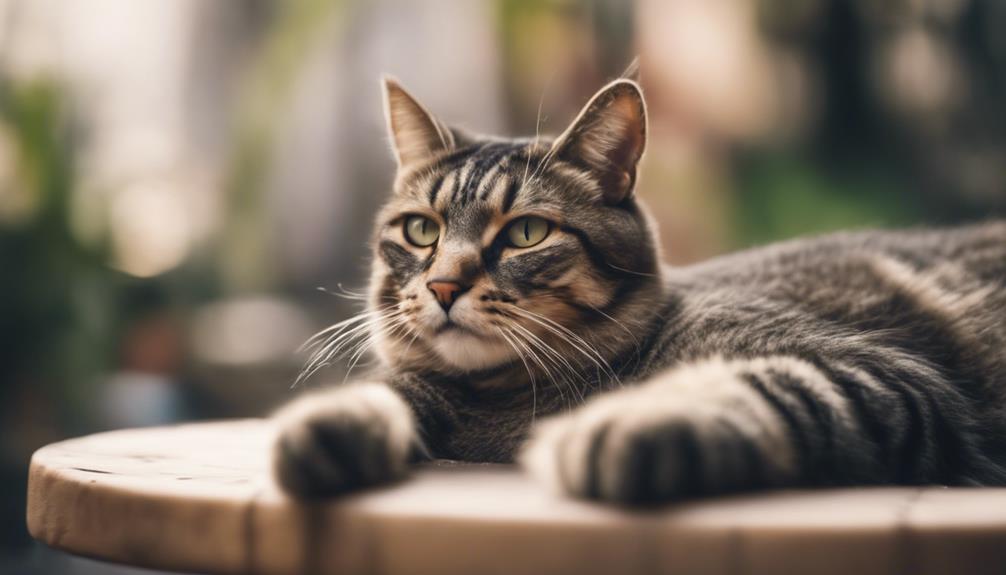
An essential aspect of feline care involves maintaining optimal health and nutrition for cats. Ensuring your cat's well-being starts with a balanced diet tailored to their specific needs. High-quality cat food rich in protein, vitamins, and minerals supports their overall health.
Adequate hydration is also vital, so always provide fresh water for your feline friend. Regular veterinary check-ups help monitor your cat's health and address any concerns promptly.
Additionally, paying attention to portion control and avoiding overfeeding can prevent obesity and related health issues. By prioritizing your cat's nutrition and health, you can help them lead a long and happy life filled with vitality and vitality.
Conclusion
In conclusion, the decision between allowing cats to roam outdoors or keeping them strictly indoors is a crucial one that impacts their well-being.
Just like a bird in a cage yearns for the freedom of the open sky, cats may feel confined or exposed to dangers depending on their environment.
By considering the behavioral, health, and safety aspects discussed, pet owners can make informed choices that prioritize their feline companion's physical and mental health.

